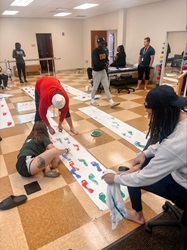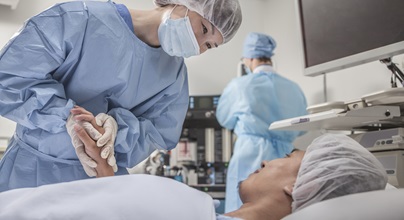You may have heard of the word gait. It simply means the way a person walks. Gait includes how someone moves their legs, feet, and arms, as well as their posture and balance while walking. When we talk about gait, we look at all the different parts of how a person walks—from how they step to how quickly and smoothly they move.
Of course, how we walk varies from person to person. Factors like our mood and age influence gait. Gait can also change if someone has an injury, illness, or condition that affects their muscles, joints, or nerves. That’s one reason healthcare workers, especially physical therapists (PTs) and physical therapist assistants (PTAs), pay attention to gait.
Why Physical Therapist Assistants Need to Understand and Analyze
Gait analysis is vital to many physical therapy assessments and interventions. Understanding gait mechanics and patterns is crucial for PTs and PTAs for several reasons.

1. Identifying Abnormalities and Impairments
Analyzing a patient’s gait allows PTAs to identify abnormalities or deviations in their walking pattern. Gait analysis helps pinpoint impairments such as muscle weakness, joint restrictions, balance issues, or neurological deficits, which may contribute to abnormal walking.
2. Informing Treatment
Knowing a patient’s gait helps physical therapists tailor treatment plans to address specific deficits that affect how a patient walks. For example, if a gait suggests a muscle weakness, the therapy can focus on strengthening those muscles. This individualized approach improves patient outcomes. PTAs who understand the science of gait mechanics can also provide care grounded in relevant research and clinical guidelines.
3. Tracking Progress and Modifying Interventions
Regular gait analysis allows PTAs to monitor progress over time. This analysis can show whether the interventions are working. If not, the physical therapist and PTA can discuss a new plan. Additionally, PTAs may modify the treatments as a patient improves or new issues emerge.
4. Improving Patient Safety
Abnormal gait patterns can increase the risk of falls or other injuries. Observing a person’s gait can help PTAs tell when a patient is at risk. They can then take steps to prevent falls or accidents. For example, they might recommend assistive devices, suggest changes to the patient’s environment, or introduce exercises that improve balance and coordination.
5. Increasing Mobility
Daily activities like walking, climbing stairs, or transitioning from sitting to standing can become easier when a person improves their gait. As a result, the patient's independence and quality of life can also improve.
6. Educating Patients and Caregivers
PTAs must have a solid grasp of gait mechanics for educating patients and their caregivers about their walking difficulties. PTAs should be able to explain exercises, safety precautions, and strategies for improving mobility. Patients who understand their problem may participate more actively in their rehabilitation.
7. Supporting Collaborative Care
PTAs need to communicate clearly and accurately with physical therapists, physicians, and other healthcare professionals about a patient's status, progress, and needs—including information about their gait. This communication is vital for coordinated, multidisciplinary care.
8. Adapting to Diverse Populations
Patients of different ages, conditions, and physical abilities may have unique gait abnormalities. PTAs can use their knowledge of gait mechanics to adapt interventions to the needs of each patient, from pediatric to geriatric populations.
 How Our PTA Students Learn about Gait
How Our PTA Students Learn about Gait
At South University, the Kinesiology class in our Physical Therapist Assistant program introduces students to critical concepts about gait. (Kinesiology is the study of how humans move, so this course covers many other movement patterns as well!)
In a Gait Assessment Lab for the Kinesiology class, our students can get hands-on (or should we say feet-on?) experience analyzing gait patterns. After painting their feet and walking across paper, they assess their individual gait characteristics. This activity lets students practice:
- Analyzing gait patterns: The painted footprints provide a clear visual of each student’s step and stride, so they can examine any gait abnormalities and nuances.
- Taking objective measurements: Students measured step length, stride length, and other key parameters to gain a deeper understanding of gait mechanics.
- Discuss treatment strategies: Afterwards, the students discussed potential interventions to improve gait mechanics, considering the unique needs of different patient populations.
Through this interactive lab, our PTA students can make strides in developing the skills and insights to help patients walk with confidence and comfort.
Are you interested in becoming a PTA?1 Request information about our Physical Therapist Assistant program today to learn more!
1South University does not promise or guarantee licensure, employment, or salary amounts.
Graduates are required to sit for and pass the national certification exam and obtain a state license in order to work in the field. (Exam names vary by program) Please refer to the State Professional Licensure Determination and National Certification/Licensure section of the University catalog for program and state specific information. Graduates are required to sit for and pass the national certification exam and obtain a state license in order to work in the field. (Exam names vary by program) Please refer to the State Professional Licensure Determination and National Certification/Licensure section of the University catalog for program and state specific information. South University cannot guarantee each graduate will pass the required licensure examinations. Outside agencies control the requirements for taking and passing certification/licensing exams and are subject to change without notice to South University. Students must pass the required licensure to work in their respective field.




